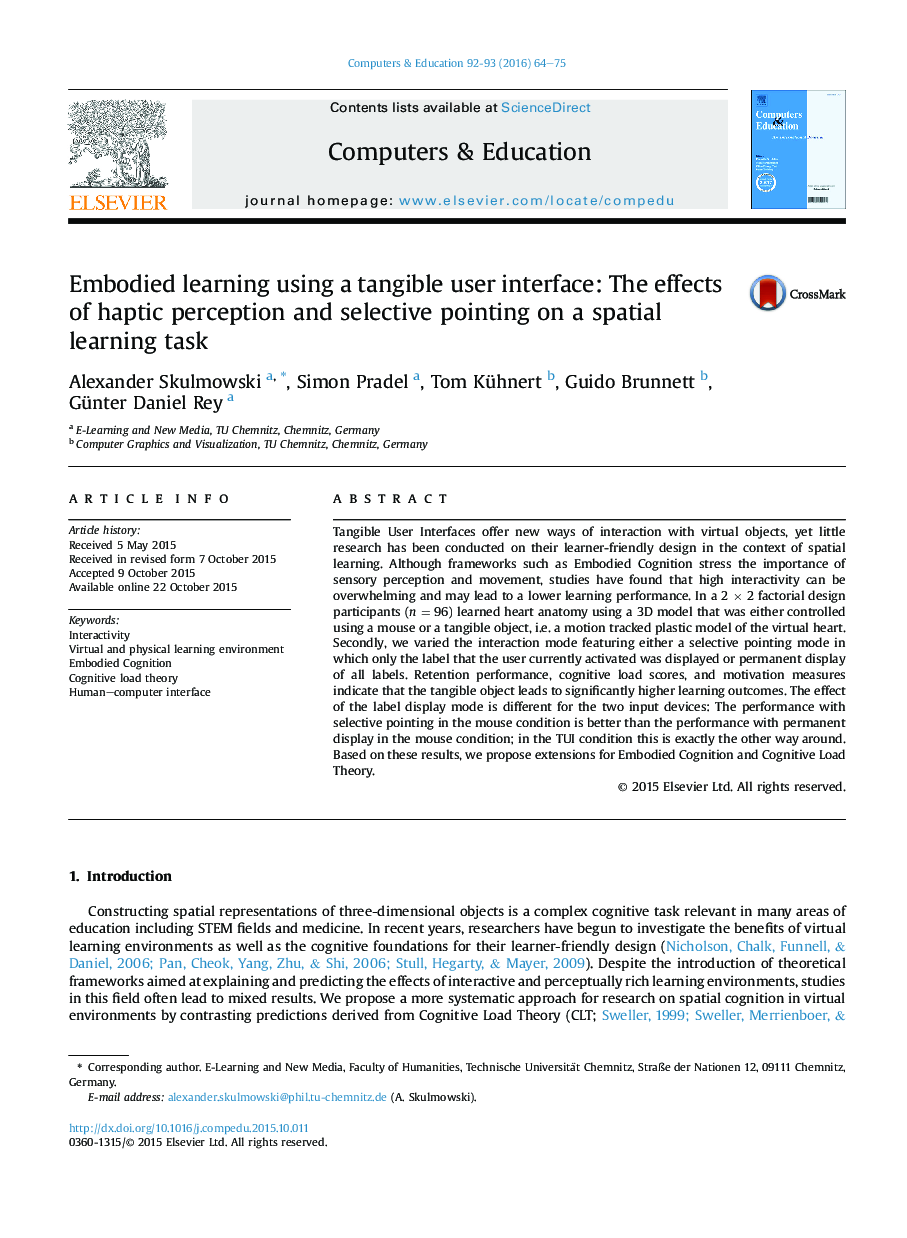| کد مقاله | کد نشریه | سال انتشار | مقاله انگلیسی | نسخه تمام متن |
|---|---|---|---|---|
| 348216 | 618168 | 2016 | 12 صفحه PDF | دانلود رایگان |
• Multisensory learning is investigated using a tangible user interface.
• An interactive selective pointing of labels is contrasted with permanent display.
• Higher interactivity leads to worse learning performance with the tangible interface.
• We introduce Embodied Cognitive Load Theory as extension for Cognitive Load Theory.
• Interactivity and haptic perception are discussed in terms of a cost-benefit model.
Tangible User Interfaces offer new ways of interaction with virtual objects, yet little research has been conducted on their learner-friendly design in the context of spatial learning. Although frameworks such as Embodied Cognition stress the importance of sensory perception and movement, studies have found that high interactivity can be overwhelming and may lead to a lower learning performance. In a 2 × 2 factorial design participants (n = 96) learned heart anatomy using a 3D model that was either controlled using a mouse or a tangible object, i.e. a motion tracked plastic model of the virtual heart. Secondly, we varied the interaction mode featuring either a selective pointing mode in which only the label that the user currently activated was displayed or permanent display of all labels. Retention performance, cognitive load scores, and motivation measures indicate that the tangible object leads to significantly higher learning outcomes. The effect of the label display mode is different for the two input devices: The performance with selective pointing in the mouse condition is better than the performance with permanent display in the mouse condition; in the TUI condition this is exactly the other way around. Based on these results, we propose extensions for Embodied Cognition and Cognitive Load Theory.
Journal: Computers & Education - Volumes 92–93, January–February 2016, Pages 64–75
